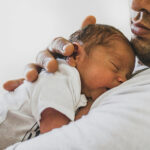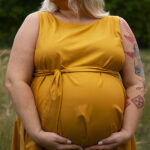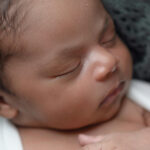Incredible Case: Successful Tubal Reversal After IVF Failure – A Journey to Motherhood at 42 and 44 Years Old
Mrs. F, a 42-year-old woman, and her partner, Mr. M (39), came to our clinic for a second opinion after unsuccessful IVF treatments. Mrs. F had undergone tubal ligation (getting her tubes tied) eight years earlier, in 2006. Even though she still had regular menstrual cycles, she was in a new relationship and wanted to conceive with her new partner. Her partner’s sperm analysis showed no problems, meaning the main obstacle for the couple was Mrs. F’s previous tubal ligation.
The IVF Journey
Mrs. F began her IVF journey with high hopes, but unfortunately, the treatment did not go as planned:
- October 2013: She started her first IVF cycle, but it had to be cancelled due to poor response to ovarian stimulation despite using a strong dose of 300 IU medication.
- December 2013: In her second IVF cycle, three eggs were retrieved, but only one fertilized. A single embryo was transferred on day 2. Although she had a positive pregnancy test, it was a very early miscarriage, with an initial low HCG level of 25 IU.
After this, Mrs. F decided to change doctors and tried a third IVF cycle:
- January 2014: In her third IVF attempt, two eggs were retrieved, and again, only one fertilized. The embryo was transferred on day 3, but unfortunately, no pregnancy occurred this time.
A New Approach – Tubal Reversal
At 42 years old, Mrs. F came to see me for a second opinion. After reviewing her history and options, I suggested a different approach: microscopic tubal reversal surgery, also known as tubal anastomosis, to reconnect her fallopian tubes.
In June 2014, Mrs. F underwent microscopic bilateral tubal anastomosis, a delicate procedure that reconnects the fallopian tubes, allowing eggs to travel from the ovaries to the uterus naturally. The surgery was successful, and just one month after the procedure, Mrs. F received the wonderful news—she was pregnant. Her HCG level was 10,830 IU, indicating a healthy early pregnancy.
In 2015, Mrs. F gave birth to a healthy baby boy, marking the start of a new chapter in her life.
Spontaneous Conception at 44
Amazingly, the couple’s journey didn’t end there. At the age of 44, Mrs. F conceived spontaneously, without any medical intervention. She went on to deliver a healthy baby girl, completing their family in the most unexpected and joyous way.
Reflection
This case is a powerful reminder that sometimes, the right approach isn’t always the first one we try. After experiencing the disappointment of failed IVF cycles, Mrs. F was able to achieve her dream of becoming a mother, not once but twice, thanks to a successful tubal reversal and a reminder that a good fertility specialist has to be able and skilled in performing diverse treatment options like microscopic surgery. This story serves as an inspiration to couples facing infertility challenges, showing that with the right treatment plan and perseverance, dreams of parenthood can still come true, even in later reproductive years.
This case highlights the importance of individualizing fertility treatments and exploring all available options. Whether through advanced reproductive techniques like IVF or more traditional approaches like tubal reversal, every couple’s journey is unique. Mrs. F’s story is a testament to hope and resilience, especially for women in their 40s who may feel that time is running out.










